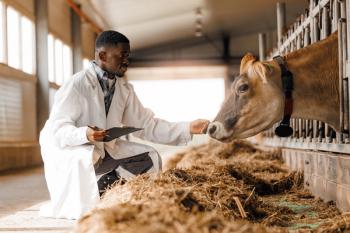
Oregon State Veterinary Diagnostic Laboratory receives 3 grants
These funds from the National Animal Health Laboratory Network will allow the OVDL to grow its emergency response capacity.
The Oregon Veterinary Diagnostic Laboratory (OVDL) located at Oregon State University (OSU) has received 3 grants from the National Animal Health Laboratory Network enabling it to further expand its role in addressing large disease outbreaks in the Pacific Northwest.
According to a university release, the laboratory’s main purpose is to test and diagnose animal diseases (ie, infectious diseases in agricultural animals). What's more, when the COVID-19 pandemic initially struck, the OVDL assisted with human test samples during a time when testing capacity in Oregon was extremely limited.
“We’ve really illustrated that animal testing and human testing are one and the same, and our capabilities in large-scale animal testing translate to human testing,” said Justin Sanders, an assistant professor in OSU’s Carlson College of Veterinary Medicine and 1 of the principal investigators on OSU’s TRACE project which monitors COVID-19’s prevalence throughout the state. “Maintaining those capabilities for the future and building on them is critical.”
Each of the 3 grants—totaling $675,155—will address a specific aspect of the lab’s emergency response work. The first will fund a series of practice exercises created to bolster inter-agency coordination and identify gaps in the OVDL’s existing preparedness for regulatory testing.
In addition, the project features table-top exercises that simulate an outbreak, followed by boots-on-the-ground exercises where fictitious samples will be physically processed in the laboratory, according to the release.
“The boots-on-the-ground exercises are particularly valuable not only for troubleshooting but also training personnel at the OVDL and agencies working closely with the OVDL,” said Christiane Löhr, a professor in the veterinary college and a diagnostic pathologist.
The second grant will help the OVDL integrate the new equipment it obtained for SARS-CoV-2 testing into current emergency testing workflows, thus growing its animal disease testing, plus implementing rapid sequencing of pathogens at the lab.
Further, the third grant will efficiently streamline data transfer between the OVDL and the National Animal Health Laboratory Network while enhancing communication surrounding disease surveillance and emergency response.
Additionally, quality assurance manager at the lab, Donna Mulrooney, stressed that the quicker diagnostic laboratories can respond to a surfacing disease, the better chance there is at managing and reducing its impact on humans, animals, and the environment alike. As of recent, she revealed that laboratories nationwide are on watch for African swine fever—a virus deadly to pigs that has not yet entered the US but could be severely detrimental to swine exports and domestic herds.
“We certainly learned lessons in the pandemic that we’re applying in all these projects,” Sanders noted.
"So many of these outbreaks have the potential to really jeopardize the economy of the state, not to mention our food supply,” he continued. “The ability to rapidly identify and respond to agriculturally important pathogens and wildlife pathogens is critical to the economic health of the state.”
Reference
Oregon State Veterinary Diagnostic lab receives 3 grants to expand emergency response capacity. News release. Oregon State University. December 28, 2021. Accessed January 3, 2021.https://today.oregonstate.edu/news/oregon-state-veterinary-diagnostic-lab-receives-3-grants-expand-emergency-response-capacity
Newsletter
From exam room tips to practice management insights, get trusted veterinary news delivered straight to your inbox—subscribe to dvm360.






